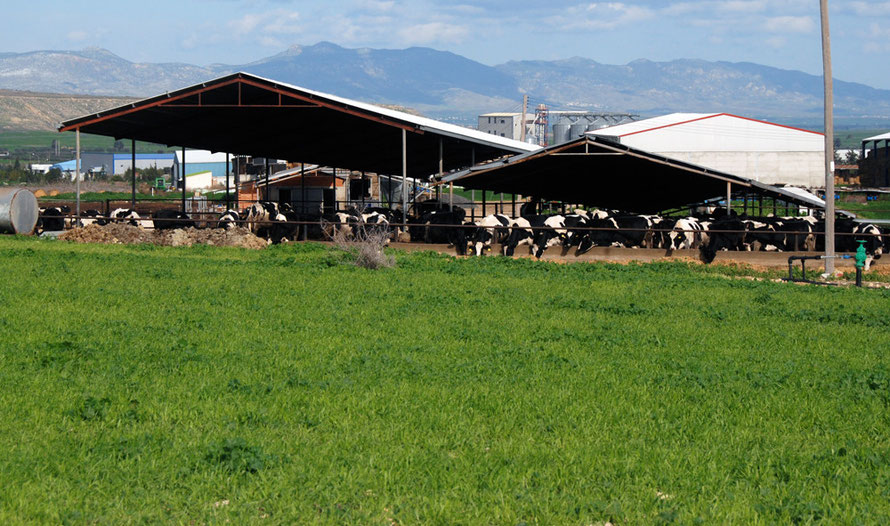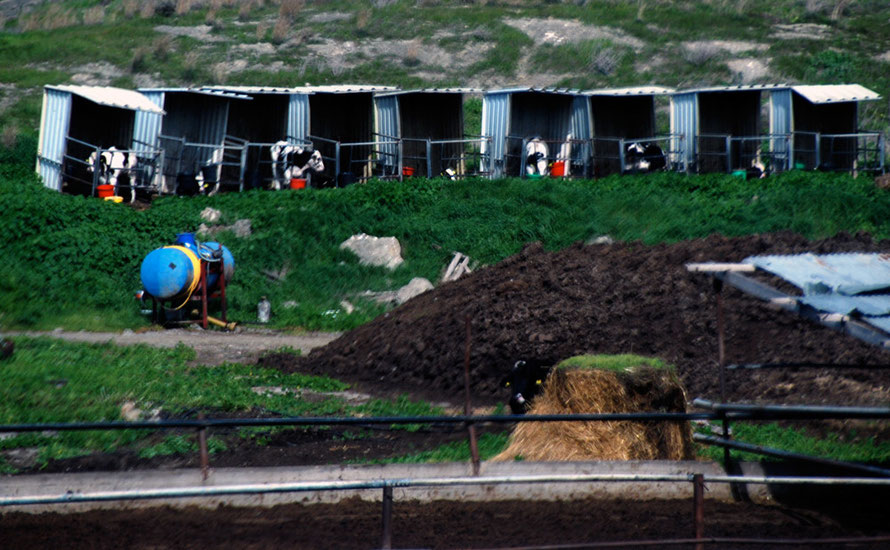Cyprus Interiors IV: Dairy Farming
Agricultural land in Cyprus is privately owned and nearly all farms are small family enterprises. The mean size of holding is 4.5ha ranging from 2.7ha in the mountains to 5.6ha in the plains. These holdings are themselves fragmented between separate parcels of little more than half an hectare located in one or more villages. The total number of small-holders in Cyprus is approximately 42,500.
There are about 30,000 dairy cows in the Cyprus but there are not very happy. At least according to a country visit by two US members of the Babcock Institute in 2003.
The study found that Cypriot cows suffer from poor access to fodder and are given high levels of concentrates in compensation which can lead to metabolic
problems and results in milk with a low fat and protein content. What fodder there is is dry fodder made from baled winter barley and crown vetch. Hygiene conditions are reported as being
poor and poor sheds lead to dirty cows, milk and high rates of mastitis during 'wet season management' in the winter. And high summer temperatures depress milk yields.
These conditions have presumably been improved somewhat with entry to the EU in 2004. It seems it was the Brits who introduced the poor Holstein dairy cow to Cyprus.
Prior to that the island's 3,500 shepherds and goat farmers provided the milk for the island's distinctive Halloumi cheese.This cheese has gradually been adulterated with larger and larger proportions of cheaper cow's milk over the years, in some case reaching 90% cow to 10% goat/sheep's milk.
In 2012 the Cypriot government decided that Halloumi should contain at least 51% sheep and goat milk much to the anger of the island's dairy farmers. This decision was taken to further attempt's to secure a 'protected status' badge for Cyprus Halloumi cheese from the EU.
Dairy farmers have reacted by buying up their own cheese production facilities and calling the resulting cheese 'Halloumis', not Halloumi. (The difference an 's' can make!)
They also hoped that a 1557 manuscript penned by a future Doge of Venice would come to their rescue: in the text the Venetian described Halloumi as being made from a mix of cow, sheep and goat milk. But the text has been dismissed as being written by an outsider who didn't know what he was talking about. (See Wall Street Journal October 11th 2012).


